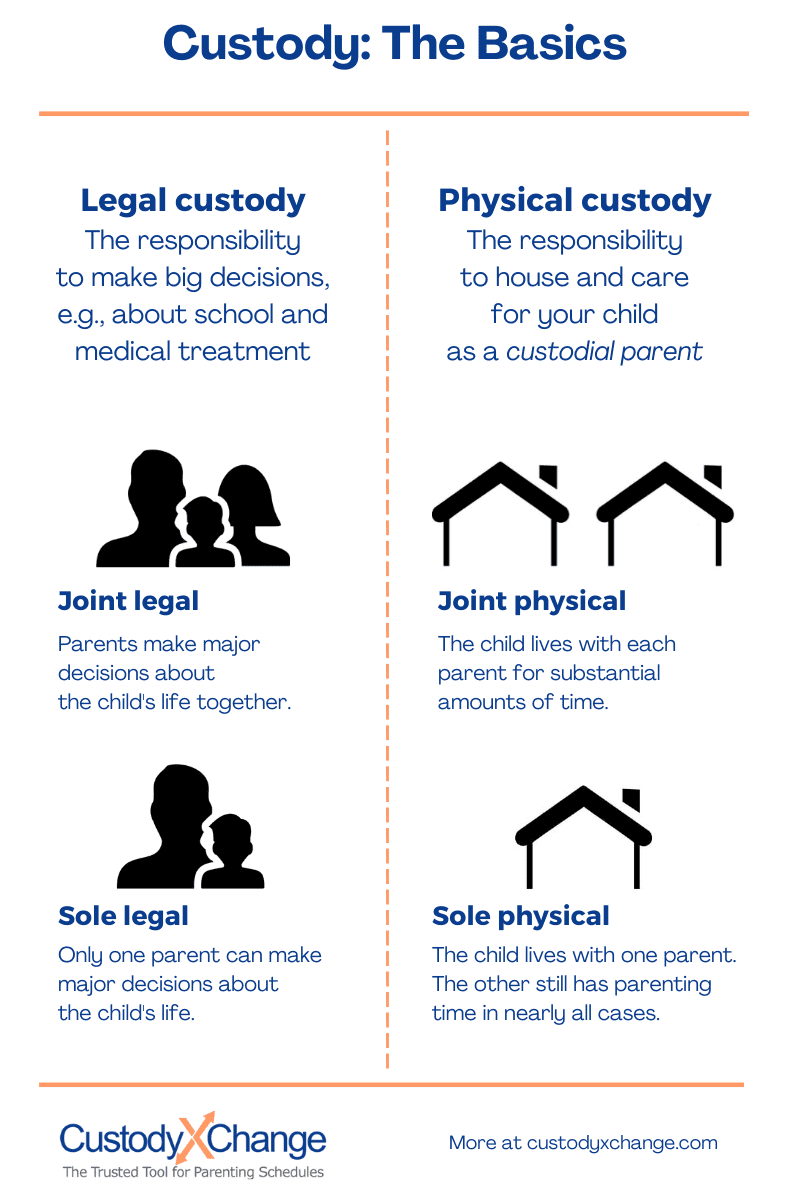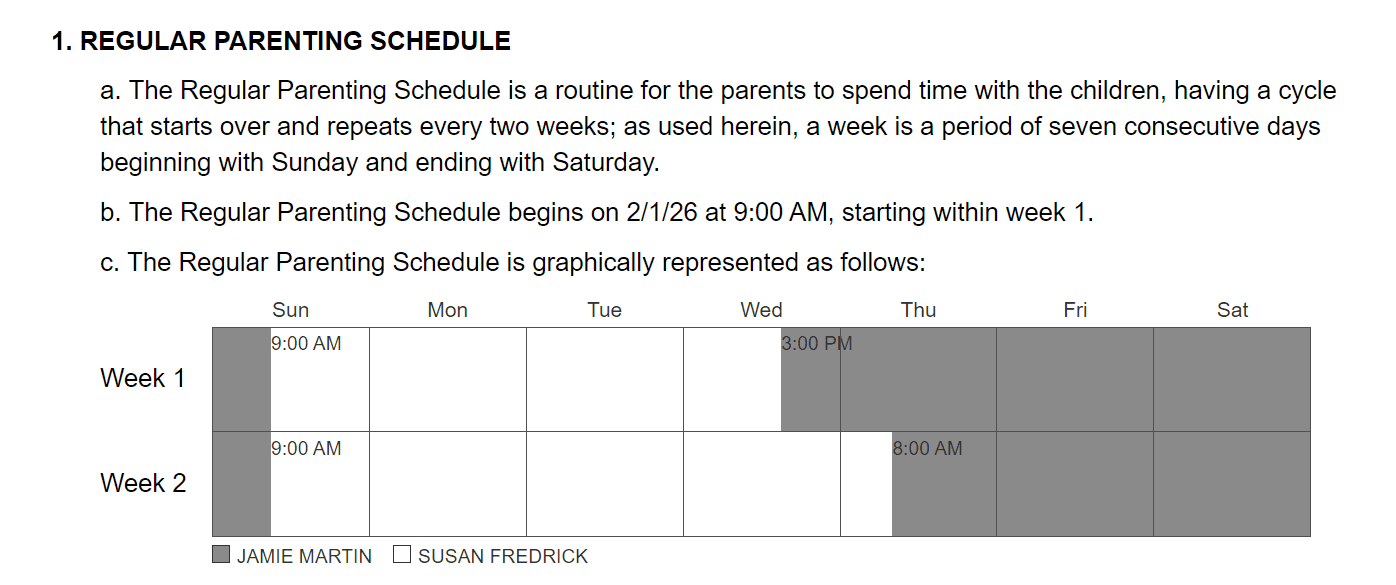Nevada Parenting Plans (Custody Agreements)
A parenting plan details how parents will raise their children despite no longer being in a relationship.
In Nevada, parents who agree on custody are required to submit a parenting plan to the court. For help negotiating, you can hire a lawyer or try an alternative dispute resolution method, like mediation.
Parents who disagree are only expected to propose a parenting time schedule (individually). You may use a parenting plan template to show the court your ideal schedule. You have the option to fill out other parts of the plan in the hope that the judge will order what you suggest.

You can customize this to fit your situation with Custody X Change.
Creating a parenting plan when you agree
Nevada gives parents the freedom to format their plan however they wish.
While the state doesn't offer a template, you can use the Custody X Change parenting plan template. Choose from 140 categorized provisions or create your own to round out your plan.

You can customize this to fit your situation with Custody X Change.
You'll attach your plan to your joint petition for custody or divorce. Or, if your case has already begun, you can submit it to the court with a motion requesting the court adopt your plan as the final custody order.
Topics you must cover
You're only required to state your arrangements for physical and legal custody.
- Physical custody designates how much time a parent spends with their child. Show the details with a parenting time schedule.
- Legal custody is the right to make major decisions about the child's education, religion and more.

It's most common for parents to have joint custody. Both spend at least 40% of the year with the child (joint physical custody) and make major decisions about the child's education, schooling, etc. (joint legal custody).
Alternatively, you may give one parent primary custody. The custodial parent will have the child in their custody for more than 60 percent of the year (primary physical custody) and make all major decisions (primary legal custody).
Meanwhile, in primary custody, the noncustodial parent has regular visits with the child so long as it's safe. (There can be supervised visits if necessary.) They can make day-to-day decisions when the child is in their care and can access the child's school, medical and other records.
Other custody combinations are possible. For example, you could have joint legal custody but only give one parent physical custody (perhaps if the other one lives far away). Choose what will work best for your family.
Regardless of your legal custody arrangement, parents must agree on health care providers prior to the child receiving treatment.
Additional topics to consider
There's no limit to how many provisions you can include in your plan. Some topics to consider:
- New partners: Set rules for introducing new partners to your children, the partners' involvement in the child's upbringing and more.
- Co-parenting boundaries: Establish what is and isn't okay in your co-parenting relationship.
- Claiming the child on taxes: Specify whether parents will take turns claiming the child on taxes or if the custodial parent will claim the child every year.
- Expenses: State who is responsible for covering the costs of extracurriculars, child care and uninsured medical expenses. Child support is addressed separately, so leave it out of your plan.
- Contact when the child is in the other parent's care: State how parent and child can stay in touch when the child is away.
- Revisions: State how you will handle updating your plan as your child's needs change.
If you haven't reached an agreement
Submitting a parenting time schedule proposal is important. It shows the court that you're invested and, hopefully, prevents you from getting a schedule that doesn't work.
With a Custody X Change calendar, you can choose a schedule template or build a schedule from scratch. Your schedule will appear in written and visual form in your parenting plan.

You can customize this to fit your situation with Custody X Change.
From there, decide if you want to add other provisions to your proposed plan. You can add anything suggested above for parents who agree or provisions you come up with on your own.
Finally, print your plan and attach it to your custody complaint or your request for default judgment, or present it at a case conference.
The easiest way to make a parenting plan
When you're writing a parenting plan, it's critical you use airtight language that leaves no room for interpretation.
If you hire a lawyer, they'll write up the plan and ensure it meets the court's requirements.
If you write your own plan, use technology to take guesswork out of the equation. The parenting plan template in the Custody X Change online app walks you through each step.

You can customize this to fit your situation with Custody X Change.
The result is a professional-quality document that demonstrates your competence as a parent from the first glance.
The easiest and most reliable way to make a parenting plan is with Custody X Change.
